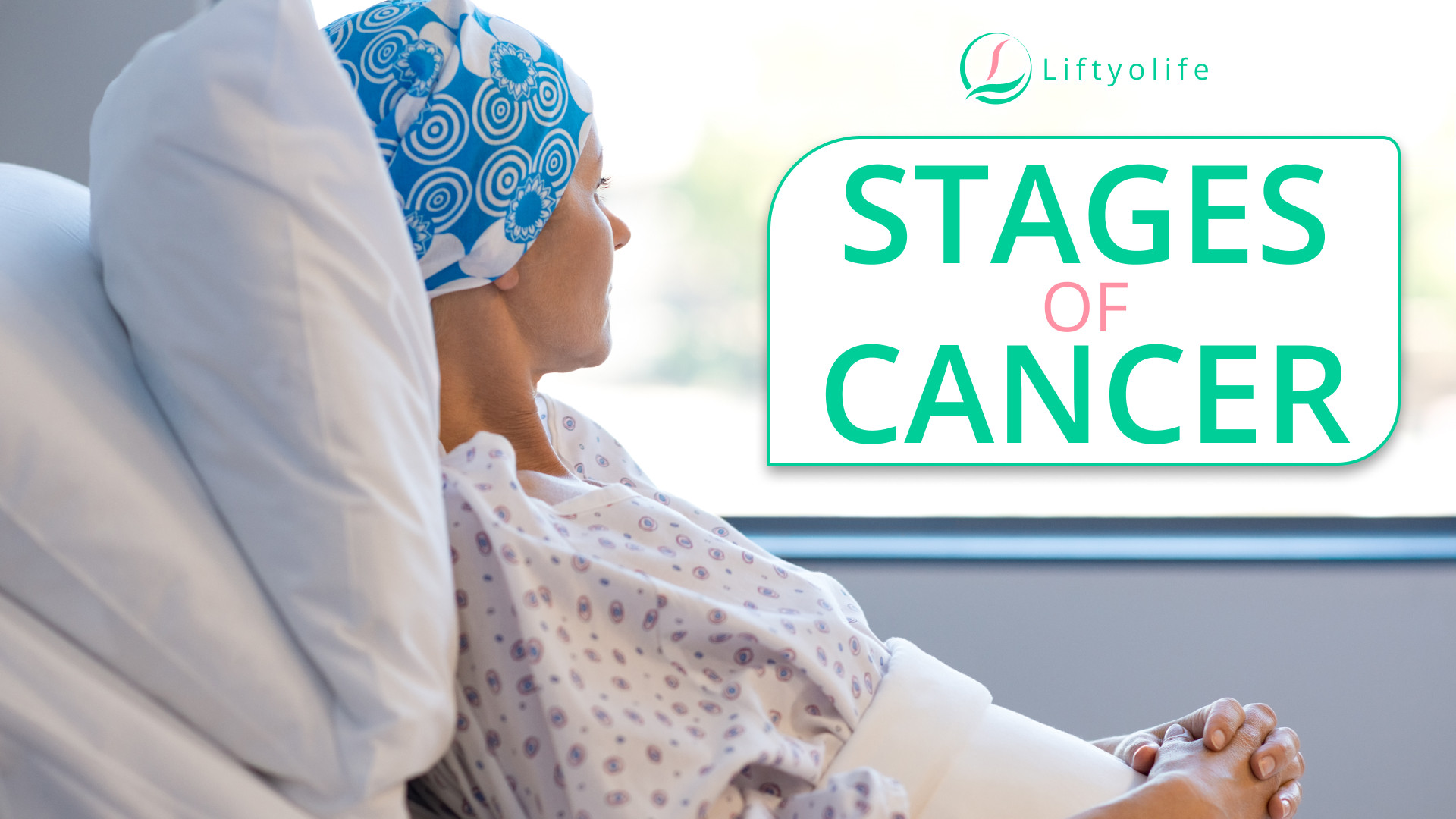What Is Cancer: Symptoms & Causes
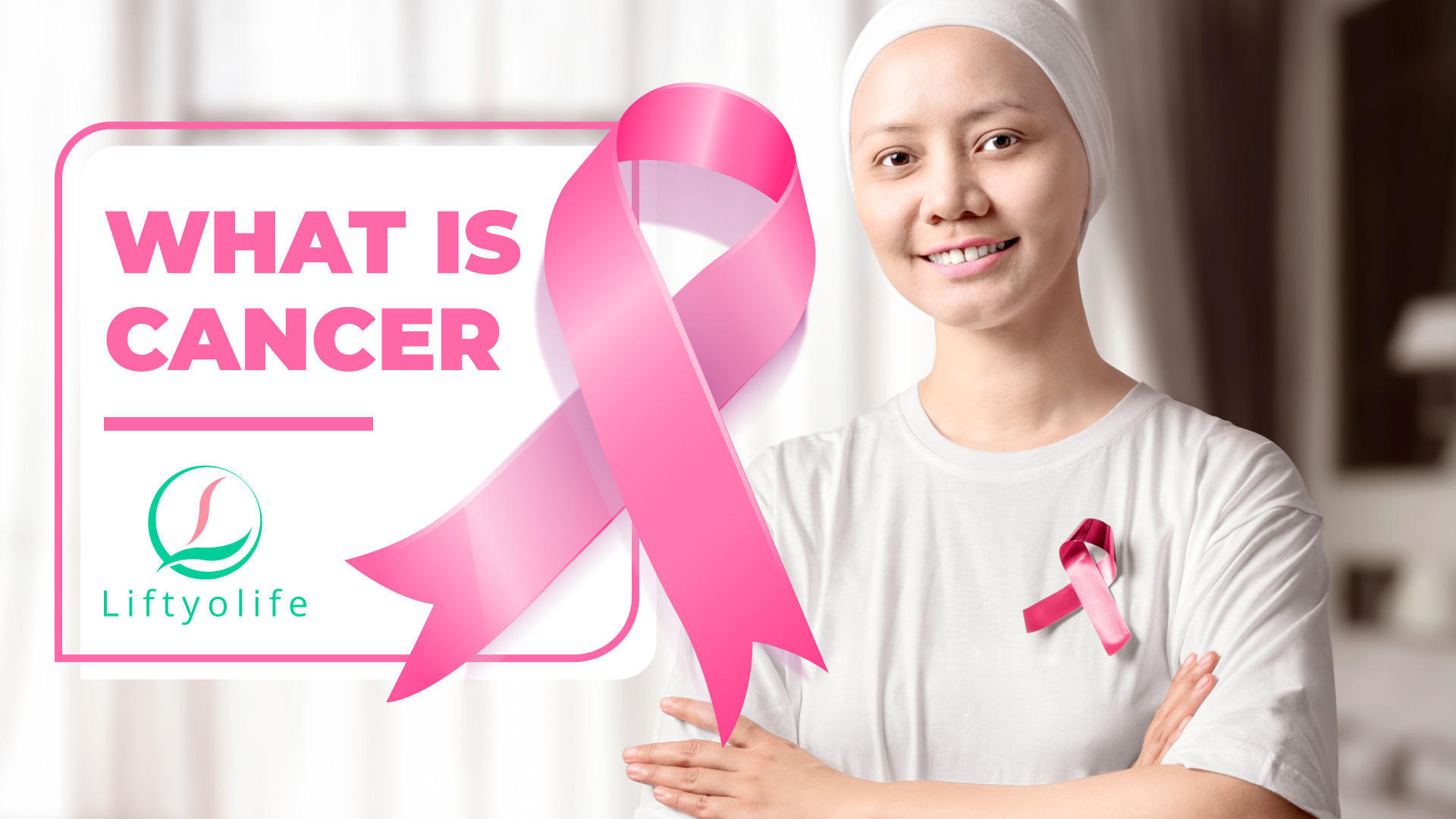
What is cancer? This disease is classified as a non-communicable disease. Most people believe that if they get cancer, their lives will be cut short and die someday (perhaps tomorrow). Do not live in fear of cancer and death; instead, let us gather all useful information about this killer and devise a good strategy to defeat it. Liftyolife (liftyolife.com) can be your companion if you are looking for one.
1. What is cancer?
Cancer is a disease that causes specific cells to grow uncontrollably and spread to many parts of the body.
Furthermore, cancer can start almost anywhere in the human body’s trillions of cells. Human cells usually grow and multiply (a process known as cell division) to form new cells needed by the body. Cells die because of aging or become damaged, and new cells replace them.
This orderly process occasionally breaks down, allowing abnormal or damaged cells to grow and multiply when they should not. These cells can combine to form tumors, which are tissue lumps. But, tumors may or may not be cancerous (benign).
Cancerous tumors are also known as malignant tumors. Cancerous tumors invade nearby tissues and can travel to distant locations in the body to form new tumors (a process called metastasis). Many cancers include solid tumors, but blood cancers do not.
One point is that benign tumors do not invade or spread into nearby tissues. They usually do not recur when benign tumors are removed, whereas cancerous tumors occasionally do. Nevertheless, benign tumors can grow to be quite large at times. Sometimes, benign tumors can cause severe symptoms or be fatal, such as in the brain.
2. How does cancer develop?
Cancer occurs when the body’s standard control mechanism fails. Old cells do not die; instead, they increase uncontrollably, resulting in new, abnormal cells. These extra cells can combine to form a tissue mass known as a tumor. Some cancers, like leukemia, do not produce tumors. Cancer is one of the genetic diseases caused by changes in the genes that control how cells function, mainly how they grow and divide.
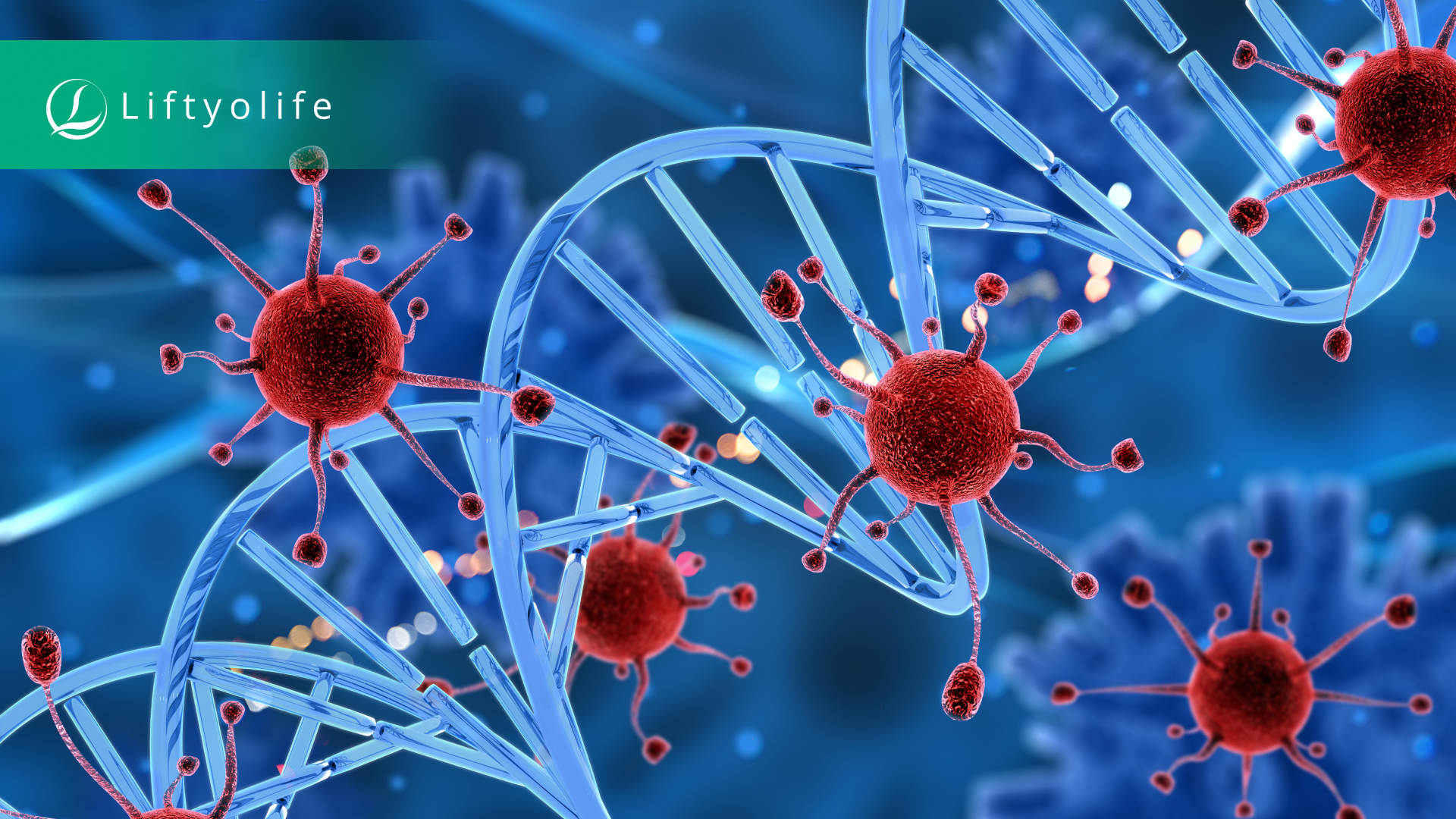
How does cancer develop?
Cancer-causing genetic changes can occur as a result of:
- errors that occur during cell division;
- DNA damage caused by harmful substances in the environment, such as tobacco smoke chemicals and ultraviolet rays from the sun;
- They were passed down from our parents.
Typically, the body eliminates cells with damaged DNA before they become cancerous. However, as we age, our bodies’ ability to do so declines. This is one of the reasons why people are more likely to develop cancer later in life. Each person’s cancer has a distinct set of genetic changes. Different cells within the same tumor may have various genetic changes. Additional changes will occur as cancer progresses.
3. How cancer spreads
Local invasion of invasive cancer refers to cancer that spreads into nearby tissue. Cancer can spread to other body parts from where it began (the primary site). Cancer cells can expand to surrounding tissues and structures as a tumor grows by pushing on normal tissue beside the tumor. They also produce enzymes that degrade normal cells and tissues as they increase.
These diseased cells that break free from a tumor can travel to other body parts via the bloodstream or the lymph system. They can run through the bloodstream and reach distant organs. After that, these cells may end up in lymph nodes if they travel through the lymph system. In either case, most of the escaped cancer cells die or are killed before they can begin to grow elsewhere. However, one or two may settle in a new location, grow, and form new tumors. Metastasis refers to the spread of cancer to a new part of the body.
Moreover, cancer cells must go through several changes to spread to new body parts. They must first separate from the primary tumor and attach to the outside wall of a lymph vessel or blood vessel. They then pass through the vessel wall to join blood or lymph flow to a new organ or lymph node.
4. What is the cancer stage?
When cancer is exposed, tests are performed to determine the size of cancer and whether it has expanded from its original location or not. This is known as the cancer stage.
Let’s take a closer look at it. A lower stage (stage 1 or 2) indicates that cancer has not spread widely. Then a higher number (stage 3 or 4) shows that it has spread further. Finally, the fourth stage is the most advanced.
The cancer stage is critical in determining the best treatment for a person. Inquire with your doctor about the stage of your cancer and what it means for you.
5. Differences between cancer cells and normal cells
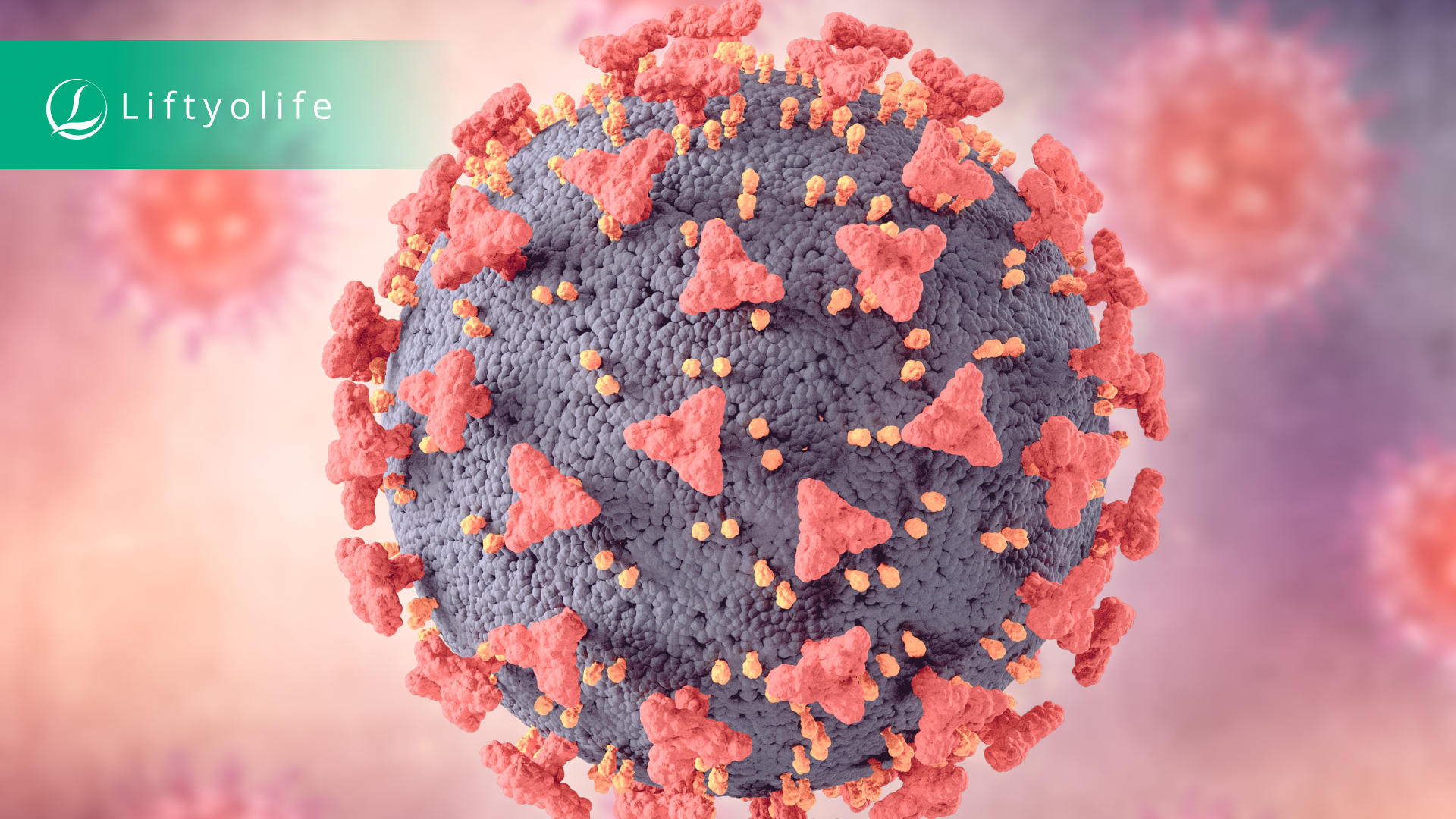
Differences between cancer cells and normal cells
- Cell shape: Human cells come in various shapes and sizes. Different types of cells do not resemble one another, but if you analyze cells of the same cell type, they will appear remarkably similar, with a uniform shape. Cancer cells are misshapen and appear as a jumbled mass of cells in various shapes and sizes.
- Nucleus: The regulation of nuclear morphology involves many structural components. The nucleus of normal cells has a smooth appearance and a uniform, spheroid shape. Cancer cell nuclei frequently misshapen, and bulges are known as “blebs” in cells’ nuclear membranes. According to research, this “blebbing” is caused by an imbalance in the proteins that make up the nuclear lamina, which causes the lamina fibers to separate.
- Nucleolus: The morphology of a cancer cell’s nucleolus/ nucleoli can be used to assess tumor aggressiveness and clinical outcome. The nucleolus becomes increasingly enlarged and irregular in cancer cells – cells can have multiple nucleoli within the nucleus.
- Chromatin: In cancer cells, the fine, evenly distributed chromatin transforms into coarse chromatin, aggregating into irregular clumps that vary in size and shape.
- Blood supply: Angiogenesis refers to the formation of new blood vessels from pre-existing vasculature. Angiogenesis is a critical process in normal cells during development, growth, and wound healing. However, it is also linked to cancer growth due to the tumor’s ability to secrete chemical signals that promote angiogenesis.
- Functioning: Normal cells carry out their intended function, whereas cancer cells may or may not.
- Ability to metastasize (Spread): Normal cells remain in the areas of the body where they are supposed to be. Some cancer cells may lack the adhesion molecules that cause stickiness, allowing them to detach and run to other body parts through the bloodstream and lymphatic system—they can metastasize.
- Cell repair and cell death: When normal cells are damaged or old, they either repair themselves or die (apoptosis). Cancer cells either do not repair themselves or do not undergo apoptosis.
- Growth: When producing enough cells, normal cells stop growing (reproducing). Otherwise, cancer cells do not stop growing when enough cells are present. This continued growth frequently results in the formation of a tumor (a cluster of cancer cells).
6. Types of cancer
6.1. Brain and spinal cord tumors
The brain and spinal cord’s tumors come in many forms. These tumors are named after the type of cell that gave rise to them and the tumor’s location in the central nervous system. An astrocytic tumor, for example, begins in star-shaped brain cells called astrocytes, which help keep nerve cells healthy. Brain tumors can be malignant or benign.
6.2. Carcinoma
The most common type of cancer is carcinoma. They are formed by epithelial cells, which cover the inside and outside surfaces of the body. In other words, carcinoma begins in the skin or tissues that line other organs. There are many different types of epithelial cells, which have a column-like shape when viewed through a microscope.
6.3. Leukemia
Leukemia is a type of cancer that affects the bone marrow, responsible for producing blood cells. These cancers do not develop into solid tumors. Instead, abnormal white blood cells crowd out normal blood cells in the blood and bone marrow. A low level of normal blood cells can make it more difficult for the body to deliver oxygen to its tissues, control bleeding, and fight infections.
6.4. Lymphoma
Lymphoma is immune system cancer. In other words, it is cancer that begins in the lymphatic system. The lymphatic system is a network of vessels and glands that aid in infection resistance.
Lymphoma begins in the lymphocytes (T cells or B cells). These white blood cells fight disease and are part of the immune system. In lymphoma, abnormal lymphocytes accumulate in lymph nodes, lymph vessels, and other organs.
6.5. Melanoma
Melanoma begins in cells that develop into melanocytes, specialized cells that produce melanin (the pigment giving skin its color). Moreover, most melanomas form on the skin, thriving in other pigmented tissues, such as the eye. Melanoma is far more likely to invade nearby tissue and expand to other body parts.
6.6. Multiple myeloma
Multiple myeloma is a kind of cancer that starts in plasma cells, a different immune cell. Myeloma cells, which are abnormal plasma cells, accumulate in the bone marrow and form tumors in bones throughout the body. Plasma cell myeloma and Kahler disease are other names for multiple myeloma.
6.7. Sarcoma
Sarcomas begin in the connective tissues that support and connect the body. Sarcomas are cancers that develop in the bones and soft tissues, such as muscle, fat, blood vessels, lymph vessels, and fibrous tissue (tendons and ligaments).
6.8. Other types of tumors
- Neuroendocrine tumors:
Neuroendocrine tumors can be benign or malignant. They develop from cells that release hormones into the bloodstream in response to a nervous system signal. These tumors, which may produce more hormones than usual, can cause various symptoms.
- Germ cell tumors:
They are cancers that begin in the cells that produce sperm or eggs. These tumors can develop almost anywhere in the body and can be benign or malignant.
- Carcinoid tumors:
They are a type of neuroendocrine tumor and slow-grow tumors that typically occur in the gastrointestinal system. Moreover, Carcinoid tumors can spread to the liver or other body parts and secrete substances like serotonin and prostaglandins, resulting in carcinoid syndrome.
7. Symptoms of cancer
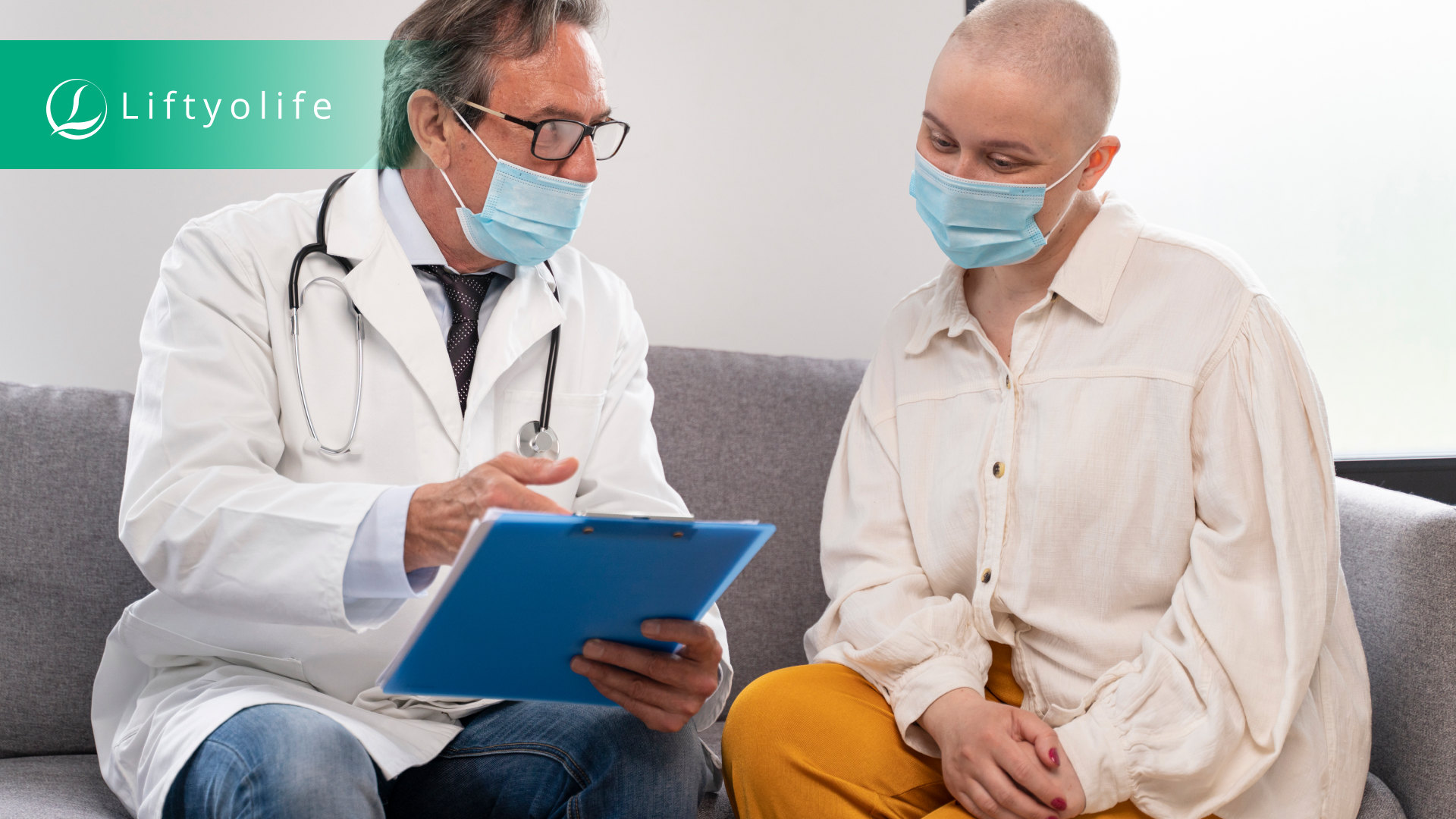
Symptoms of cancer
Cancer signs and symptoms differ depending on which part of the body is affected. Some general signs and symptoms associated with cancer are as follows:
- fatigue,
- unusual bleeding or bruising,
- weight fluctuations, including unintentional loss or gain,
- skin changes such as yellowing, darkening, or redness of the skin, unhealed sores, or changes to existing moles,
- a lump under the skin or area of thickening that can be felt.
- muscle or joint pain that is persistent and unexplained
- persistent coughing or difficulty breathing,
- consistent indigestion or abdominal discomfort after eating,
- hoarseness,
- swallowing difficulties,
- chronic, unexplained fevers or night sweats,
- alterations in bowel or bladder habits.
8. Causes
8.1. Is Cancer genetic?
Most cancers are caused by gene changes throughout a person’s life. Cancer is a genetic disease, which means that it is caused by changes in genes controlling how our cells function, mainly how they grow and divide.
8.2. Types of genes that cause cancer
Tumor suppressor genes and oncogenes are two types of genes that play a role in cancer.
- Tumor suppressor genes:
Normal genes regulate cell division, repair DNA errors, and instruct cells when to die (a process known as apoptosis or programmed cell death). When tumor suppressor genes fail to function well, cells can grow out of control, leading to cancer.
Cell division can become uncontrollable when something goes wrong with the gene, such as a mutation. A tumor suppressor gene is analogous to a car’s brake pedal. It usually prevents the cell from dividing too quickly, similar to how a brake prevents a car from driving too fast.
- Oncogenes:
An oncogene is a type of bad gene. Proto-oncogenes are genes that generally aid in the growth of cells. When a proto-oncogene mutates (changes) or has too many duplications, it becomes a “bad” gene that can be permanently turned on or activated when it should not be. When this happens, the cell grows uncontrollably, resulting in cancer.
9. Risk factors
9.1. Your age
Cancer can develop for decades. As a result, the majority of cancer patients are 65 or older. While it is more common in older adults, cancer is not only a disease of adults; cancer can be diagnosed at any age.
9.2. Your environment
The environment around you may contain hazardous chemicals that increase your cancer risk. Asbestos and benzene, two typical household and workplace chemicals, have also been linked to an increased risk of cancer. Even if you don’t smoke, you may inhale secondhand smoke if you go to places where people smoke or live with someone who does.
9.3. Your family history
If cancer runs in your family, mutations may be passed down from generation to generation. You may be a candidate for genetic testing to determine whether you have inherited mutations that increase your risk of developing certain cancers. Remember that having an inherited genetic mutation does not guarantee developing cancer.
9.4. Your habits
Lifestyle choices have been linked to an increased risk of cancer. Smoking, drinking more than one drink per day for women and up to two drinks per day for men, excessive sun exposure or frequent blistering sunburns, being obese, and having unsafe sex are all risk factors for cancer.
9.5. Your health conditions
Certain chronic health conditions, such as ulcerative colitis, can significantly raise your risk of developing certain cancers. Discuss your risk with your doctor.
10. Complications
Cancer is the disease that is most prone to complications, even when treated early on. Here are some common cancer complications:
- Fatigue: Fatigue from chemotherapy or radiation therapy is common, but it is usually transient.
- Nausea: Certain cancers and cancer treatments can make you feel sick. Medications and other therapies may help you avoid or reduce nausea. Your doctor can sometimes predict whether or not your medicine will cause nausea.
- Pain: Cancer and cancer treatment can cause pain, though not all cancer is painful. Cancer-related pain can be effectively treated with medications and other approaches.
- Difficulty breathing: Treatments may provide some relief.
- Constipation or diarrhea: Cancer and cancer treatment can have an impact on your bowels, causing diarrhea or constipation.
- Chemical changes in your body: Cancer can disrupt your body’s average chemical balance, increasing your risk of serious complications. Excessive thirst, frequent urination, constipation, and confusion are signs and symptoms of chemical imbalances.
- Weight loss: Weight loss may occur due to cancer or cancer treatment. Cancer steals nutrients from normal cells and deprives them of food. This isn’t easy to treat because it is often unaffected by how many calories or what type of food is consumed.
- Unusual immune system reactions to cancer: In several cases, the body’s immune system may attack healthy cells in response to the presence of cancer. These infrequent reactions, known as paraneoplastic syndromes, can cause a variety of signs and symptoms, including difficulty walking and seizures.
- Brain and nervous system problems: Cancer can cause pain and loss of function by pressing on nearby nerves in one part of your body. Cancer of the brain can cause headaches and stroke-like symptoms.
- Cancer returns: Cancer survivors face the risk of recurrence. Inquire with your doctor about what you can do to lower your risk of cancer recurrence. Following treatment, your doctor may devise a follow-up care plan for you.
- Cancer that spreads: Cancer can spread (metastasize) to other parts of the body as it progresses. The type of cancer determines the location of cancer spread.
11. How is cancer treated?
Many cancer-treatment procedures and drugs are currently available, with many more being researched. Some treatments, such as surgery and radiation therapy, are “local,” meaning they are used to treat a specific tumor or area of the body. Because drug treatments (such as chemotherapy, immunotherapy, or targeted therapy) can affect the entire body, they are often referred to as “systemic” treatments. Cancer can be treated with the following therapies:
- Surgery: Surgery is used to prevent, detect, stage, and treat cancer. It can also alleviate (palliate) cancer-related discomfort or problems. Sometimes a single surgery can address more than one of these objectives.
- Chemotherapy: Using any drug to treat any disease is referred to as chemotherapy. Most people, however, associate chemotherapy (or “chemo”) with cancer-treatment drugs.
- Radiation therapy: It is one of the most commonly used cancer treatments. Radiation therapy destroys or damages cancer cells using high-energy particles or waves such as x-rays, gamma rays, electron beams, or protons.
- Targeted therapy is a kind of cancer treatment in which drugs are used to “target” cancer cells while leaving normal cells alone.
- Immunotherapy is a treatment that employs specific components of a person’s immune system to combat diseases such as cancer.
- Stem cell or bone marrow transplant: Stem cell transplants are replaced bone marrow cells that have been destroyed by cancer or by the chemotherapy or radiation used to treat cancer.
- Hormone therapy is a systemic treatment because the hormones it targets circulate throughout the body. Hormone therapy drugs travel throughout the body to target and locate the hormones.
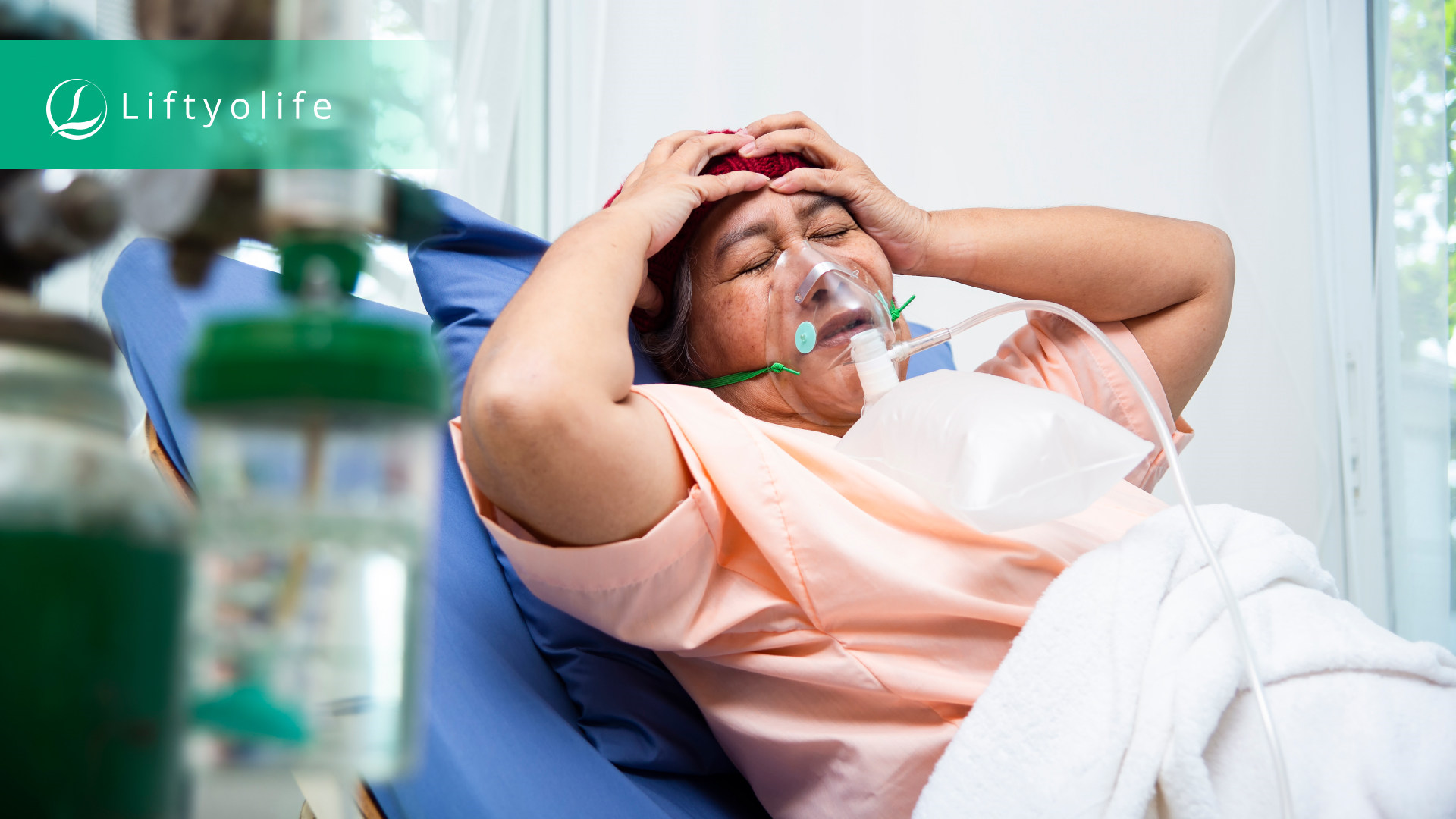
How is cancer treated?
12. Prevention
- Avoid excessive sun exposure: The sun’s harmful ultraviolet (UV) rays can increase your risk of developing skin cancer. Stay in the shade, wear protective clothing, or apply sunscreen to reduce your sun exposure.
- Stop smoking: Quit smoking if you smoke. Smoking has been linked to various cancers, not just lung cancer. Stopping now will lower your risk of developing cancer in the future.
- Exercise 5 days of the week: Regular physical activity at least 30 minutes for 5 days a week has been connected to lower cancer risk. If you haven’t been exercising regularly, begin slowly and gradually increase your time to 30 minutes or more.
- Eat a healthy diet: Choose a fruit and vegetable-rich diet; select whole grains and lean protein sources. Limit your consumption of processed meats.
- Schedule cancer screening exams: Consult your doctor about the best types of cancer screening exams for you based on your risk factors.
- Drink alcohol in moderation: If you must consume alcohol, do so in moderation. That equates to up to 1 drink per day for women and 2 drinks for men in healthy adults.
- Maintain a healthy weight: Overweight or obese may increase your chances of developing cancer. Maintain your healthy weight through a healthy diet and regular exercise.
- Ask your doctor about immunizations: Immunizations may aid in preventing such viruses like human papillomavirus (HPV), which increases the risk of cervical cancer, and hepatitis B, which increases the risk of liver cancer.
Cancer screening tests and studies are designed to detect cancer early when it is more likely to be cured with treatment. Every 6 months is the recommended time for a screen test. Do not ignore the question, “What is cancer?” The answer could save your life. Stay in touch with Liftyolife (liftyolife.com) today if you want to live a healthy and happy life.
==> Read More:

